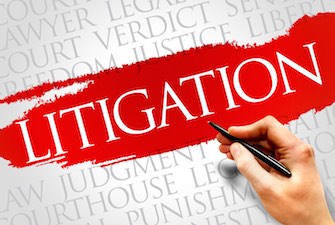 The TC Heartland decision follows the trend of eroding patent holder rights due to the potential for infringers to more easily move the lawsuit to a more favorable forum and in some cases have the issues of infringement and discovery for same stayed for a year or more. As patents and mechanisms to enforce patents become weaker, the high-tech economy of Northern California will begin to diminish as foreign companies encounter fewer obstacles in their way to compete against companies with weaker IP rights.
The TC Heartland decision follows the trend of eroding patent holder rights due to the potential for infringers to more easily move the lawsuit to a more favorable forum and in some cases have the issues of infringement and discovery for same stayed for a year or more. As patents and mechanisms to enforce patents become weaker, the high-tech economy of Northern California will begin to diminish as foreign companies encounter fewer obstacles in their way to compete against companies with weaker IP rights.
I don’t believe there will be a huge increase of patent complaints filed in the Northern District as a result of the TC Heartland decision. If plaintiffs study the win rates of contested motions in the Northern District they won’t want to file there. According to Legal Metrics, 63% of motions filed there that are contested are granted. So a defendant who files a Patent Trial & Appeal Board proceeding (for example, an Inter Partes Review) to contest the validity of the asserted patent at the US Patent & Trademark Office proceeding and also files a motion to stay the Northern District litigation (pending the outcome of the PTAB ruling on validity) will win such a motion more than half the time. This compares to a win rate of 34% in the Eastern District of Texas and 54% win rate in Delaware.
TC Heartland is not the only decision or “event” to cause an erosion of patent rights in recent years. Other actions have eroded patentee rights and may encourage infringers, including the Supreme Court decision in the Alice case. This ruling established a much easier path for defendants to invalidate software and business method patents on the grounds of a lack of patentable subject matter. Because software companies bolster much of the economy in Northern California, these pro-infringer rulings may start to have a negative effect on much of Northern California.
What can patent owners do? Patentees should carefully analyze the chance of success or failure of a motion to stay compared district by district. Because so much hinges on a stay motion in modern patent litigation cases, this predominant statistic influences where plaintiffs should consider filing their patent complaint. If the stay is granted, the momentum shifts significantly in favor of the defendant/accused infringer who, consequently, won’t have to fight on two fronts simultaneously. Also, the issue of the defendant’s infringement is taken off the table and only the validity of the patent will be at stake for at least one year.
The grant of a defendant’s motion to stay, undermines a plaintiff/patentee’s position because the potential to take discovery regarding accusations of infringement will be delayed at least one year, pending the outcome of the PTAB proceeding. Also, it’s more likely that a patent will be determined invalid during a PTAB proceeding than in the Northern District because the PTAB will use a broader rule of interpretation of the claims of the challenged patent (broadest reasonable interpretation) than in a district court. For example, if the size of a “bull’s eye” of a dartboard is enlarged there is a higher likelihood that a dart will land in such a broadened bull’s eye. Likewise, the PTAB expands the interpretations given to terms of a patent claim, which increases the likelihood of invalidating the patent.
Unfortunately for patent owners, the availability of PTAB proceedings tends to disfavor patentees. So too does the likelihood in the Northern District that the patentee’s complaint will be set aside for at least a year (usually while the defendant continues to infringe and take away a patentee’s market share) when a defendant’s motion to stay is granted. Eventually this could negatively affect the ability of tech companies/patentees in Northern California to protect jobs in the area. In the meantime, patent owners should consider avoiding the Northern District of California if other venues are available and offer more strategic advantages.

![[IPWatchdog Logo]](https://ipwatchdog.com/wp-content/themes/IPWatchdog%20-%202023/assets/images/temp/logo-small@2x.png)

![[Advertisement]](https://ipwatchdog.com/wp-content/uploads/2024/04/Patent-Litigation-Masters-2024-sidebar-early-bird-ends-Apr-21-last-chance-700x500-1.jpg)

![[Advertisement]](https://ipwatchdog.com/wp-content/uploads/2021/12/WEBINAR-336-x-280-px.png)
![[Advertisement]](https://ipwatchdog.com/wp-content/uploads/2021/12/2021-Patent-Practice-on-Demand-recorded-Feb-2021-336-x-280.jpg)
![[Advertisement]](https://ipwatchdog.com/wp-content/uploads/2021/12/Ad-4-The-Invent-Patent-System™.png)







Join the Discussion
No comments yet.